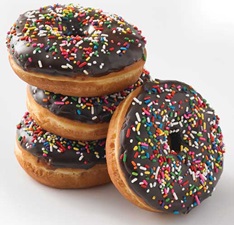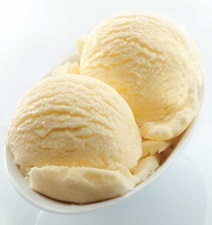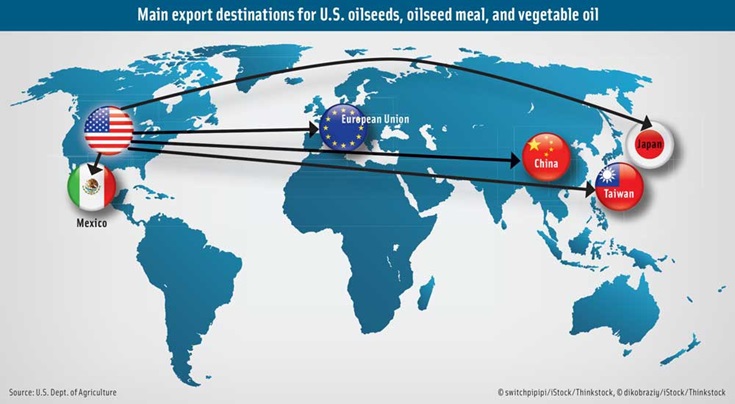Forward-Looking Fats and Oils
INGREDIENTS

Dramatic changes in what consumers want and what policy makers demand are affecting the entire food industry, and developments in the fats and oils category provide excellent examples of both. Consumers want nutritionally enhanced foods, and the U.S. Food and Drug Administration (FDA) has been focused for years on removing trans fats from the food supply, mandating in 2015 that food manufacturers remove partially hydrogenated oils (PHOs), the primary source of trans fat in processed foods. As a result, ingredient producers developed a number of trans fat–free alternatives that provide suitable function and nutrition. The innovation goes beyond these replacements for PHOs though. Plant breeders and geneticists continue research on trait-modified crops like canola and soybean with low-to-no saturates and levels of fatty acids that make the resulting oils and shortening conducive to use in specific applications. Regardless of the source, the next-generation fats and oils are improving the performance of products from fried foods to dairy and adding important nutritional components.
Advances in Soybean Oils
June 2018 is the date by which food manufacturers are required to reformulate products to remove PHOs. When the FDA in June 2015 announced that PHOs would lose their generally recognized as safe (GRAS) status and would need to be removed from the food supply, food manufacturers began their search for ingredients that could replace the unique functionalities of PHOs. “These properties are essentially an amalgamation of the properties of oleic and stearic acid,” says Frank J. Flider, oils consultant for QUALISOY. Producers of fats and oils have invested in research and processes such as interesterification of high oleic soybean oil with fully hydrogenated soybean oil to develop shortenings that closely match the properties of PHOs.
 Not only do these high oleic soybean oil shortenings have a variety of functional attributes, but they are also easy to use. QUALISOY has demonstrated that its shortenings are excellent drop-in replacements for PHOs in most applications. “QUALISOY, in collaboration with Stratas Foods, conducted comparative functionality testing programs studying high oleic soybean oils and shortenings against other possible PHO substitutes such as palm and high oleic canola, and utilizing PHOs as reference targets,” explains Flider. So far, he says, the scientists have determined that high oleic soybean oils and shortenings are drop-in solutions for PHOs in deep-frying applications, cake and yeast-raised doughnuts, cakes, cookies, and icings, with a strong showing observed in ready-to-use icings, which are used in independent and in-store bakeries. “QUALISOY’s testing demonstrates that high oleic soybean shortenings can be developed for virtually any application where PHO shortenings were previously used,” says Flider.
Not only do these high oleic soybean oil shortenings have a variety of functional attributes, but they are also easy to use. QUALISOY has demonstrated that its shortenings are excellent drop-in replacements for PHOs in most applications. “QUALISOY, in collaboration with Stratas Foods, conducted comparative functionality testing programs studying high oleic soybean oils and shortenings against other possible PHO substitutes such as palm and high oleic canola, and utilizing PHOs as reference targets,” explains Flider. So far, he says, the scientists have determined that high oleic soybean oils and shortenings are drop-in solutions for PHOs in deep-frying applications, cake and yeast-raised doughnuts, cakes, cookies, and icings, with a strong showing observed in ready-to-use icings, which are used in independent and in-store bakeries. “QUALISOY’s testing demonstrates that high oleic soybean shortenings can be developed for virtually any application where PHO shortenings were previously used,” says Flider.
Prior to 2006, which is when the FDA required manufacturers to label trans fats, the U.S. used nearly 18 billion pounds of soybean oil, nearly half of which was hydrogenated or partially hydrogenated, says Flider. By 2015, the demand for soybean oil dropped to 14 billion pounds as companies replaced PHOs with palm oils, animal oils, and other high stability and edible oils. “With innovations like interesterified high oleic soybean oil, the industry can start to recapture the lost demand,” says Flider. “Soybeans are the only oilseed crop that can address this magnitude of volume in a sustainable and cost-effective manner. QUALISOY, which is a consortium of companies and organizations involved at all levels of the value chain—seed companies, farmers, elevators, crushers, refiners, marketers, and end users—is working in concert to assure that high oleic soybean oil availability continues to grow at a deliberate and sustainable pace to meet the needs of the market. As volume grows, more acreage is coming into production and more processors and marketers are adopting the oil. We expect to achieve 1 billion pounds of high oleic soybean oil production by 2020 and approach 8 billion pounds by 2025.”
Several suppliers are ready to meet the reformulation needs of food processors with various soybean-based solutions. ADM, Ag Processing, Bunge, Cargill, CHS, Perdue Agribusiness, Stratas Foods, and ZFS offer both conventional soybean oil and high oleic soybean oil, while ADM, Stratas Foods, and Bunge supply interesterified high oleic soybean shortenings, which can be tailored to desired specifications, says Flider. “Like conventional soybean oil, each refiner offers high oleic soybean oil brands with a unique set of product specifications.” Plenish and Vistive Gold are the two commercially available high oleic soybean varieties, and Flider says that the two varieties are very similar, with slight variations in fatty acid composition. Plenish is slightly higher in oleic acid and saturates while Vistive Gold is slightly higher in polyunsaturates. “In the vast majority of food ingredient applications, oils produced from these two varieties are interchangeable.”
From soybean seed companies to ingredient producers, work continues on the development of high oleic soybeans as well as other trait-modified soybeans. “Soybeans are very sensitive to photoperiods and in-season temperature ranges, requiring different maturity groups to be developed for planting in various geographies throughout the country,” says Flider. “Breeders and seed companies are on track to expand high oleic soybean germplasm to other maturity groups, increasing production potential. As high oleic soy expands to other geographies, additional soybean crushers and refiners will adopt high oleic soy. Greater availability will drive greater production efficiencies, which will in turn result in more competitive pricing and higher demand. Given the magnitude of the high oleic program, this has been a primary focus of QUALISOY over the past several years.”
It’s expected that high oleic soybeans will ultimately be the fourth-largest row crop in the United States, following wheat, corn, and conventional soybeans. In addition to high oleic soybeans, others are being developed with a variety of unique properties. For example, omega-3 soybeans produce an oil high in the eicosapentaenoic acid precursor stearidonic acid. Scientists are also working on high-saturate soybeans that will produce higher levels of stearic and palmitic acid. “Not all QUALISOY programs focus on oil traits,” says Flider. “Programs to improve protein levels, amino acid levels, and reduce undigestible carbohydrates are also underway.”
 Enhancing Vegetable Fats
Enhancing Vegetable Fats
Removing PHOs and finding a suitable replacement is especially challenging to bakers. PHOs became popular in bakery applications because they provide structure and tenderness, slow staling/improve shelf life, and reduce spread in baking, says Chris Bohm, customer innovation manager, bakery, at AAK. They also retain air well in cakes, have excellent creaming capabilities, and make dough handling easier. Because PHOs provide these functions to bakery applications, finding the right fat ingredients as substitutes is important to maintain the quality of the finished products.
Determining the appropriate PHO replacement is not the only factor that bakers and food formulators need to take into consideration. “One of the main challenges that bakers face when eliminating PHOs from their formula is the fact that they have to adjust the other ingredients in their formula and/or their processing steps and parameters,” says Bohm. To this end, AAK offers PHO replacements that are drop-in ready, meaning they are one-to-one PHO replacements that can be incorporated into processes without having to adjust either the formula or the processes, says Bohm. “Additionally, our solutions have the optimal level of plasticity for functionality. This means having the right balance of the solid and liquid components of fat. Our PHO-free solutions mimic the functionality of what they replace.”
 Another area AAK specializes in is producing vegetable fats for dairy foods and ice cream, products where fat plays key roles, especially in texture and flavor. “In the last few years, the dairy industry has been continuously disrupted by a new ‘plant-based dairy food’ trend that is growing rapidly across the country and the world,” says Cecylia Szewczyk, senior dairy application specialist at AAK. “One can see more and more supermarket shelf space occupied by plant-based cheeses, spreads, yogurts, and drinks. Most of these products are meant to mimic traditional dairy products with texture, flavor, and functionality, but a lot of producers still struggle with new technology and new ingredients that come into play. Consumers that make the choice and go vegan almost always have to compromise, and in some cases, quite heavily.”
Another area AAK specializes in is producing vegetable fats for dairy foods and ice cream, products where fat plays key roles, especially in texture and flavor. “In the last few years, the dairy industry has been continuously disrupted by a new ‘plant-based dairy food’ trend that is growing rapidly across the country and the world,” says Cecylia Szewczyk, senior dairy application specialist at AAK. “One can see more and more supermarket shelf space occupied by plant-based cheeses, spreads, yogurts, and drinks. Most of these products are meant to mimic traditional dairy products with texture, flavor, and functionality, but a lot of producers still struggle with new technology and new ingredients that come into play. Consumers that make the choice and go vegan almost always have to compromise, and in some cases, quite heavily.”
The reason, she explains, is that fat is a primary carrier of flavor and also a main texture component that affects product functionality. AAK developed fat systems that are complex blends of vegetable oils, fats, and fractions formulated to deliver a perception of full flavor that butterfat brings, she adds.
The company’s scientists have also built upon knowledge of fats used in other applications to formulate ones for dairy products. “When it comes to texture and functionality, we elevated the bar even higher by taking our years of experience in confectionery and now applying it to dairy solutions,” says Szewczyk. “Butterfat as such brings limitations to the product’s texture where a diverse world of plant fats and oils offers solutions that allow our customers to go, play, and design the texture of their products. With AAK’s vast experience with multi-oil solutions and in-depth application knowledge, our customers can actually choose their desired flavor release, consistency, structure, melt, whip, bite, and appearance.”
Fats and oils play important roles in texture, overall sensory quality, and nutritional profile of all dairy products, including frozen desserts, says Vineet Jindal, global customer innovation manager, plant-based dairy, at AAK. “The structure of frozen desserts is a complex three-dimensional matrix, which includes ice crystals, fat crystals, air bubbles, and proteins. Fats play an important role in stabilizing this complex matrix, which eventually impacts texture and overall sensory quality.” The company developed a range of vegetable fats to replace dairy fat in frozen desserts. Jindal explains that these fats help stabilize the matrix to produce a frozen dessert with a smooth and creamy mouthfeel, modulate flavor release, deliver a specific melt profile, and reduce fat and cholesterol.
No matter the application that manufacturers produce, they all face the main challenge of meeting the clean label demands of consumers. James S. Jones, vice president of customer innovation at AAK, refers to clean label fats and oils as those without synthetic preservatives and additives. He adds that the cost per pound and dosage to achieve the desired effect using natural ingredients is often higher. “Changes in production processes and methods of incorporation to ensure even distribution into fats and oils are also frequently required to preserve the integrity of the more sensitive natural ingredients. Non-PHO functional replacements tend to be more susceptible to oxidation than their PHO counterparts. This makes getting away from the stronger, less expensive synthetic antioxidants such as BHA, BHT, and TBHQ historically used for optimal antioxidant and free radical scavenging an even bigger challenge. This is where intimate knowledge of customer strategy, consumer trends, and the new product developer’s tool box meet.” Food formulators are turning to naturally derived oil-soluble antioxidants such as green tea extract, rosemary extract, vitamin E, and carotenoids like beta-carotene and lycopene as replacements for “chemical sounding” synthetics, says Jones. Other clean label ingredients that may replace the more oxidatively stable PHOs are citric acid, which has a metal chelating ability to reduce oxidation initiators, and vitamin C as a water-soluble antioxidant in emulsions, he adds.
 Next-Generation Canola Oil
Next-Generation Canola Oil
Trait-modified oils are not new. Cargill introduced its first high oleic canola oil, Clear Valley 65, in 1993. “It delivered a great-tasting oil with no trans fat and less saturated fats than other cooking oils on the market,” says Lorin DeBonte, assistant vice president of R&D at Cargill Global Edible Oil Solutions. “Through conversion from commodity oils to Clear Valley 65 cooking oil, over 2 billion pounds of trans fats have been removed from consumer diets.” Since that time, Cargill has worked on developing the next generation of Clear Valley oils.
“This work begins with our research and development team in Fort Collins, Colo., which leads our low-saturate, high oleic canola seed development program,” says DeBonte. “They are working to create canola varieties that produce the desired properties to appeal to oils customers, but also have disease resistance and high yield potential to appeal to canola producers. The resulting low-saturate, high oleic canola oil will deliver on multiple needs within the food industry, providing a high-performing oil with the lowest level of saturated fat (up to 4.5%), a 35% reduction from previous available levels of saturated fat content.”
Another quality of these next-generation oils is their fat profile. “Its high monosaturated fat profile will be similar to that of olive oil, thereby delivering high performance when used for frying,” says DeBonte. “Equally important, our next-generation canola oil will provide high levels of stability and performance, giving this specialty oil a longer fry life than generic canola oil, while maintaining the desired flavor profile. This combination enables quick-serve restaurants to get more longevity from their fry oil, without sacrificing taste.”
New Palm Oil Options
Another type of oil used to replace trans fat is palm oil, something that IOI Loders Croklaan specializes in producing. The company recently introduced some new palm oil ingredients for frying and various bakery applications.
“Loders Croklaan has been on the front of innovation to meet customer needs,” says Linsen Liu, vice president of R&D at IOI Loders Croklaan. “Palm oil is the primary ingredient in place of trans fat. However, palm oil shortening tends to harden over storage. Hardened shortening can be difficult to cream, and even break mixing blenders, in some cases. By leveraging know-how in formulation and process, Loders has launched second-generation all-purpose palm shortening, SansTrans 39S, which has no post-hardening in storage and provides ease of use for food manufacturing.” Bakers can use the ingredient in cookies, cakes, and fillings, and it also functions in dairy substitute systems.
Two other ingredients join the SansTrans line. SansTrans 60 beaded powder shortening functions in batter and breading mixes. The ingredient has enough solid fat for use in batter for frying, and it provides desired texture and good mouthfeel, says Liu. SansTrans Roll-Rite Puff, a palm oil–based bakery shortening, is nonhydrogenated and does not contain trans fatty acids. “This product is specially formulated and processed to ensure the solid fat crystallizes readily in the ideal form, beta prime, and resists oil separation and lump formation during sheeting puffy pastry dough,” says Liu. “Additional benefits from SansTrans Roll-Rite Puff shortening include no water-containing and no milk allergy.” The company launched the ingredient at IFT17.
Keeping Up With Clean Label Demands
The demand for clean label and minimally processed has affected just about every ingredient category, fats and oils included. Consumers want products made with simpler, naturally derived ingredients, and ingredient suppliers have taken note. “With manufacturers looking for viable options to replace PHOs, many are looking to more natural avenues such as non-GMO and expeller pressed, as well as organic oils,” says Jennifer Tesch, chief marketing officer at Healthy Food Ingredients. “We have seen great and rapid growth in the Non-GMO Project label, for example, and are pleased to say our corn, canola, and sunflower oils are Non-GMO Project Verified. Our oils function in the same way ‘conventional’ oils do, but provide manufacturers with a simple and clean label option.”
Not only are food manufacturers interested in cleaner label oil options like non-GM, organic, or minimally processed (expeller pressed oils versus solvent extracted), Tesch adds that foodservice and restaurants are requesting these types of oils, too. “From an innovative solutions provider perspective, we work closely with manufacturer and foodservice operators to recommend options that will be the best fit for their application based on what they’re trying to accomplish with some of those factors or challenges.”
Healthy Food Ingredients offers a variety of oil options. These are regular and high oleic canola, coconut, corn, flax, and high oleic and mid oleic sunflower. The benefits of these oils are that they are sustainable, traceable, and nonhydrogenated, according to the company. As far as what the future holds for fats and oils, Tesch believes that the clean label trend will continue to affect the development of fats and oils ingredients. “Consumer awareness for simple, ‘made without,’ continues to be at the forefront. In turn, manufacturers are looking to find alternative (oils) that will be a good fit for their products that meet that demand and fit the criteria consumers are seeking.”
References
CHS. 2017. “CHS Partnering with DuPont Pioneer on Plenish High-Oleic Soybean Program.” Press release, Nov. 3. CHS, Inver Grove Heights, Minn. chsinc.com.
Wilson, R. F. 2015. “Overview of Trait-Modified Oils.” Chpt. 2 in Trait-Modified Oils in Food, edited by F. T. Orthoefer and G. R. List. West Sussex, United Kingdom: John Wiley & Sons Ltd.


